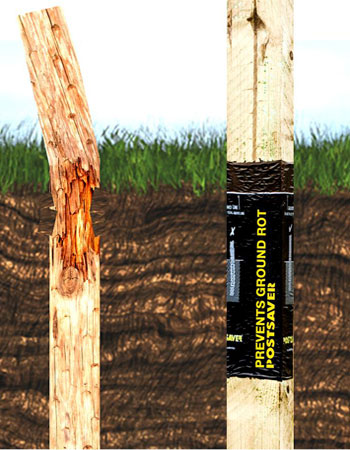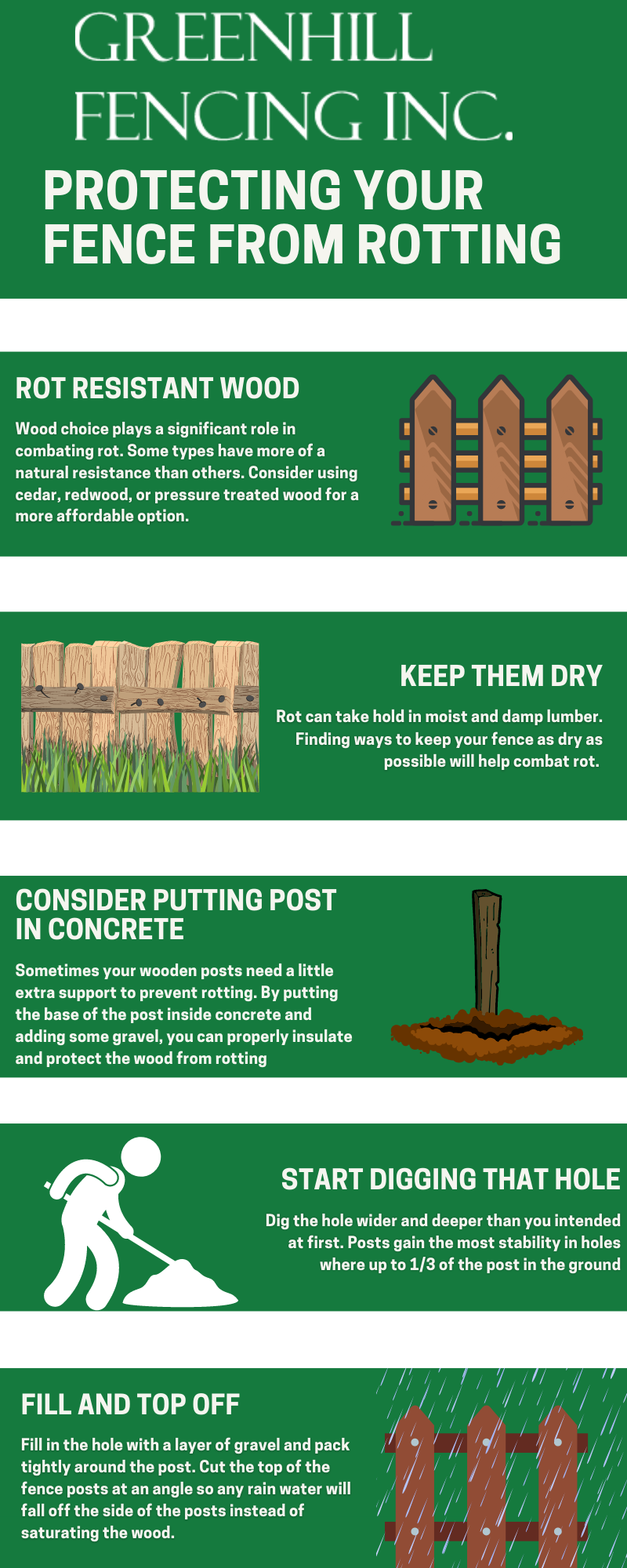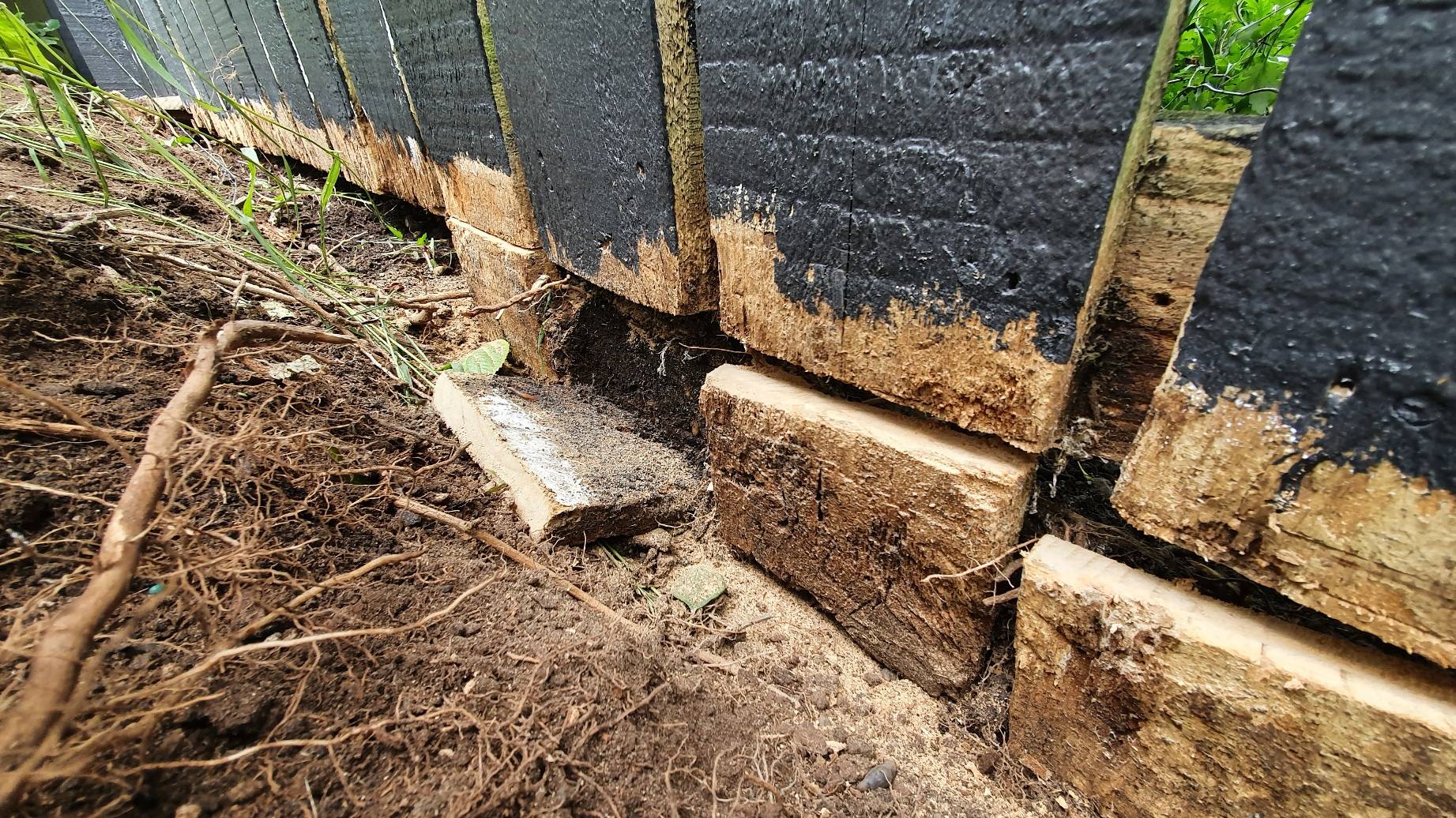Protecting a fence from rotting is essential. It ensures durability and maintains its appearance.
Wooden fences add charm to any property but are prone to rot. Moisture, insects, and fungi can damage them over time. This can lead to expensive repairs or replacements. Understanding how to protect your fence from rotting can save you money and effort.
In this blog, we’ll explore effective methods to keep your fence in great shape. From choosing the right materials to applying protective coatings, these tips will help extend the lifespan of your fence. Let’s dive in and learn how to shield your fence from the elements and keep it looking beautiful for years.

Credit: wealdfencing.co.uk
Choosing The Right Wood
Selecting the right wood helps protect your fence from rotting. Choose rot-resistant wood like cedar or redwood. Apply sealant and maintain regularly for long-lasting protection.
Types Of Rot-resistant Wood
Cedar and redwood are excellent choices. They naturally resist rot. Cypress is also a good option. It contains a natural preservative called cypretine. Teak is another durable choice. It is often used for outdoor furniture.
Benefits Of Pressure-treated Lumber
Pressure-treated lumber is a smart choice. It is treated with chemicals to resist rot. This makes it last longer. Affordable and widely available. Easy to find at most hardware stores. It can withstand harsh weather. Perfect for fences and decks.
Proper Installation Techniques
Proper drainage keeps your fence dry. Water should not pool around it. Slope the ground away from the fence. This way, water flows away quickly. Use gravel around the posts. Gravel helps water drain better. Your fence will stay dry longer.
Raise the fence a bit from the ground. This prevents direct contact with wet soil. Use concrete bases for support. Concrete keeps the wood off the damp ground. Install the fence at least two inches above the ground. This small gap makes a big difference.
Regular Maintenance
Regular maintenance prevents fence rotting. Clean your fence regularly and seal it with a protective coating. Ensure proper drainage to avoid water damage.
Cleaning And Inspection
Keep the fence clean to prevent rot. Dirt and moisture cause wood to decay. Use a stiff brush to remove dirt. Inspect your fence monthly for signs of damage. Look for cracks, mold, or insect damage. Catching problems early can save you time and money.
Repairing Damaged Sections
Fix any damaged parts quickly. Replace broken or rotted boards right away. Use wood preservatives to protect the new wood. Seal the ends of the wood to keep moisture out. This helps the fence last longer and stay strong.

Credit: www.greenhillfencing.com
Applying Protective Coatings
Sealants and stains help protect your fence from rot. Sealants keep water out. Stains add color and protect wood. Both extend the fence’s life. Clear sealants show natural wood. Colored stains give a fresh look.
Clean the fence first. Remove dirt and old paint. Let the fence dry. Apply the coating with a brush. Cover all parts of the wood. Let it dry completely. Add a second coat for more protection.
Managing Moisture Levels
Soil drainage is key to keeping your fence strong. Poor drainage traps water. This water causes wood to rot. Improve drainage by adding gravel around the fence base. Gravel lets water flow away. This keeps the soil dry.
Another option is to use mulch. Mulch absorbs water. It helps keep the soil around the fence dry. Keep mulch a few inches away from the fence. This stops rot and keeps your fence lasting longer.

Credit: www.harrowfencing.com
Preventing Insect Damage
Many bugs can harm your fence. Termites eat wood. Ants also cause trouble. Carpenter bees drill holes. Beetles chew on wood. Check your fence often. Look for tiny holes, sawdust, or weak spots. Knowing what to look for helps you act fast.
Use natural methods first. Mix vinegar and water. Spray it on the fence. This keeps bugs away. You can also use orange oil. Bugs do not like it. If bugs persist, try chemical treatments. Buy insecticides from the store. Follow the instructions. Keep kids and pets away during treatment. This ensures safety.
Landscaping Tips
Keep plants and shrubs away from the fence. This helps air flow and keeps the wood dry. Wet wood rots faster. So, plant at least one foot away. Use mulch to keep the soil in place. Mulch also helps to keep moisture away from the fence. Check plants regularly. Make sure they are not touching the wood. This simple step protects your fence.
Trim branches that hang over the fence. Overhanging branches can block sunlight. Sunlight helps keep the fence dry. Wet wood can rot quickly. Use a pruning tool to cut branches. Trim them often. This will keep your fence safe. Also, remove any fallen leaves. Leaves can hold moisture. Moisture leads to rotting. So, keep the area clean and dry.
Climate Considerations
Wooden fences need care to fight local weather. If you live in a rainy area, choose treated wood. It can resist water better. In sunny places, paint the fence. This will protect it from the sun’s rays.
Check your fence every season. Look for any damage. Fix broken parts soon. Clean the fence in spring. Remove dirt and moss. Apply a fresh coat of paint. This helps in summer heat. Trim plants near the fence. This keeps moisture away. In winter, clear snow off the fence. Wet snow can cause rot.
Frequently Asked Questions
How Do I Prevent My Fence From Rotting?
To prevent your fence from rotting, apply a sealant or wood preservative regularly. Ensure proper drainage around the fence posts and maintain regular inspections.
What Is The Best Wood For A Rot-resistant Fence?
Cedar, redwood, and pressure-treated pine are excellent options for rot-resistant fencing. These woods naturally resist decay and insects, ensuring longevity.
How Often Should I Seal My Wooden Fence?
Seal your wooden fence every two to three years. This helps protect it from moisture and prevents rotting. Regular maintenance is key.
Can Painting A Fence Help Prevent Rotting?
Yes, painting a fence adds an extra layer of protection against moisture. It helps prevent rotting and extends the fence’s life.
Conclusion
Protecting your fence from rotting is essential for its longevity. Regular maintenance is key. Choose the right materials and apply sealants. Clean your fence periodically to avoid moisture buildup. Inspect for any signs of damage or decay. Replace damaged sections promptly.
Proper drainage around the fence base helps. Your fence will last longer and look better with these simple steps. Maintain your fence regularly, and it will serve you well for years. Happy fencing!

